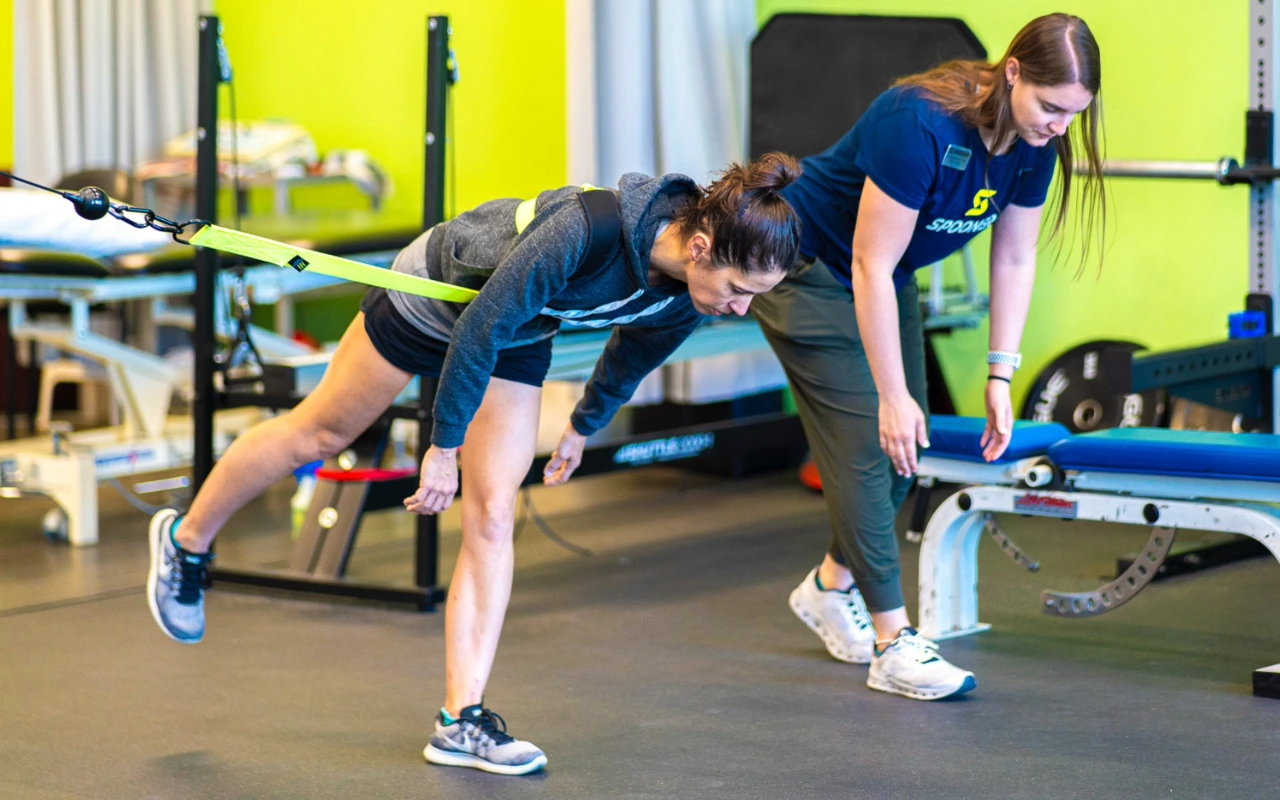By: Alix Sigrist, PT, DPT, CSCS
You have 3 hamstring muscles that are sectioned into 2 groups. The first group runs from your sit bones to behind your knee. Your sit bones are the spots you feel receive the most pressure when you are sitting down. The second group of hamstring muscles runs from your mid-thigh and passes the knee.
This incredibly large muscle group is unique in the fact that it passes two joints. Its major functions include extending the hip and bending the knee. So, if your hip is flexed and your knee is straight, you are fully stretching your hamstrings. If this position happens quickly and unexpectedly, then a strain can occur. Hamstring strains typically take 2 or more weeks to heal, depending on the severity of the injury.
Hamstring strains often occur when decelerating from a run- think at the end of a race. Sometimes, if a runner is not warmed up properly, they might strain their hamstring exploding up from the crouched position. If the hip part of the hamstring isn’t ready for that movement, a strain can happen.
3 Grades of Strains
Your muscle fibers are tightly woven together. When you strain your muscle, these fibers begin to separate- and the more separation typically indicates a more severe strain. Strain severity is categorized into 3 grades:
- Grade 1: Grade 1 has a little bit of separation in the muscle fibers. You may experience mild bruising. You can still do quite a bit of activity with a Grade 1 strain.
- Grade 2: Grade 2 has more separation than Grade 1. You may experience swelling, bruising, and pain. With this level, you will be moderately limited with your activity level. This grade tends to remain the most painful.
- Grade 3: Grade 3 indicates a complete tear of the muscle. This is going to have significant swelling, bruising, and pain. This grade will be the most painful at the time of injury because you are tearing nerve endings as well as muscle fibers. However, with a complete tear, nerve endings are usually torn as well, meaning there may not be as much pain in the following days. Swelling would most likely be the main reason for pain following this grade of injury.
With any level of strain, the worst thing you can do is sit and do nothing. These can take a while to heal, so, to help this healing along, stretching and general movement is vital. A little bit of discomfort is okay, but do not push yourself past anything over a 3/10 pain.
Symptoms of a Hamstring Strain
At the lowest and highest grades of a hamstring strain, there’s usually a lot of aching, muscle soreness, and a temptation to want to rub it out and massage it. This temptation is actually a good thing because it will help the muscle fibers lay down properly. Just be sure that you are not causing more pain with the massage.
Other symptoms include stiffness, bruising, and swelling. These typically indicate a Grade 2 strain or higher.
Other Injuries and Conditions
There are other injuries and conditions that present symptoms that mimic a hamstring strain:
- Lumbar disc with radiculopathy
- Sciatica
While these conditions can present with pain down the back of the leg, there are differentiating factors. Since they originate in your back, you’ll usually notice symptoms with coughing, laughing, sneezing, or bending forward. With a hamstring strain, you will also present symptoms when extending and actively bending your knee. With back or nerve conditions, this joint movement shouldn’t induce symptoms.
Physical Therapy for Hamstring Strains
There is a big temptation to rest, ice, compress, and elevate right after any injury. This approach isn’t actually conducive to healing. If you strain your hamstring and opt to rest it rather than go to physical therapy, your muscle fibers will get balled up. This knot of scar tissue leaves you vulnerable to re-injury because it does not have any stretch to it- unlike healthy, flat muscle fibers. With physical therapy, your muscle fibers can form back into a solid pattern and function better.
Physical therapists have the skillset to diagnose a hamstring strain, and we can get you started on exercises to jumpstart your healing journey right away. We utilize manual techniques like dry needling and scraping to help your injury heal 5x faster than if you did nothing. Through different treatment techniques and exercises, we can help you return to sport or activity safely and mitigate the risk of re-injury.
Do you think you strained your hamstring? Schedule a complimentary 15-minute movement assessment with a physical therapist today!

